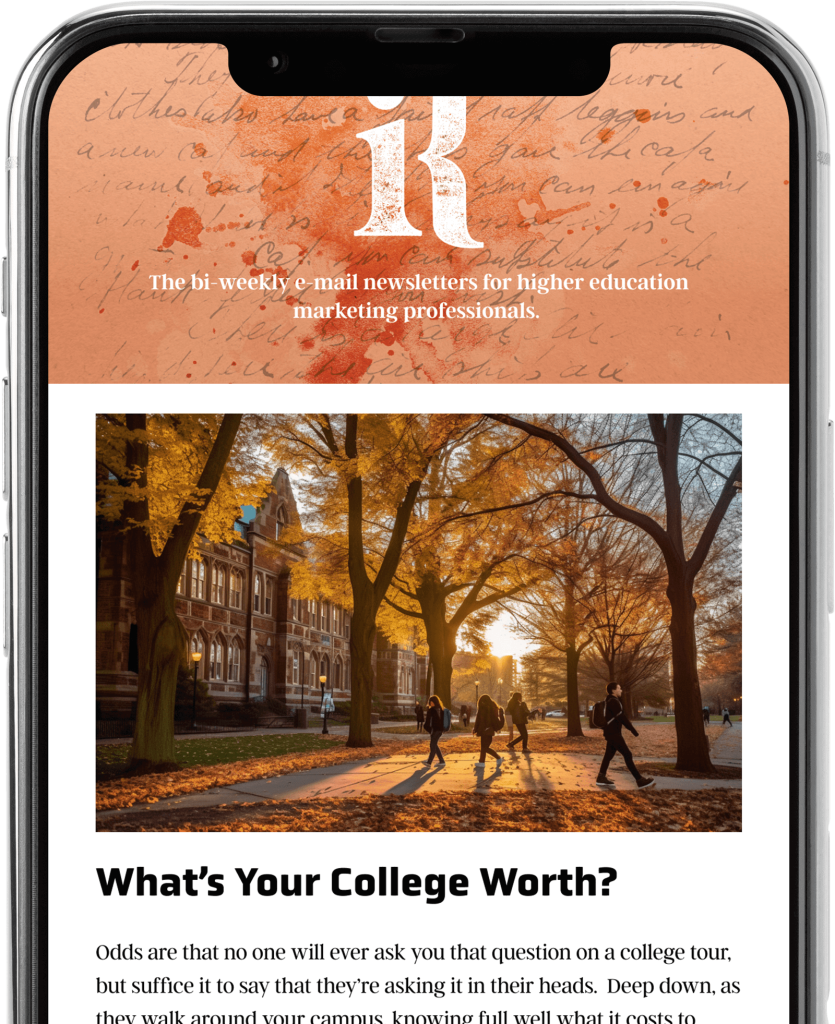HIGHER EDUCATION BRAND
The University Brand as Asset

One of the first thing that a good accounting course teaches us is what a balance sheet is and the elements of assets and liabilities. In the accounting world, assets represent things we own like buildings, real estate, and investments. Liabilities represent things an institution might owe—its debts and obligations like loans and deferred compensation.
Most assets we see on the balance sheet are physical and tangible in nature; elements like property that we can stand on, buildings we can walk in, and equipment we can pick up and use. The idea of a brand doesn’t typically fall on the balance sheet of an institution, though, because it’s intangible. As a result, a college brand doesn’t typically garner the same respect and attention because you can’t see it or pick it up. In most cases, it’s not even really seen as a “real” asset.
The classic work of Professor David Aaker, widely considered the father of modern branding, has proven otherwise. Your institution’s brand is an indeed an asset and has measurable value. A concept developed during his extended tenure at University of California Berkley’s Haas School of Business Administration, Haas has shown that an organization’s brand is an asset that should be recognized, cultivated, and managed.
These tangible and measurable impacts can be managed in a variety of institutional activities and results. Some of the more obvious ones include:
• Enhanced Recruiting and Admissions – An increase in the quantity and qualify of applications, leading to a more selective admissions process and a higher yield rate.
• Increased Alumni Engagement and Giving – Higher rates of alumni participation in events, more volunteerism, and increased donations, which can be directly measured through fundraising metrics.
• Stronger Partnership Opportunities – A rise in partnership agreements and sponsored research projects, which can enhance the institution’s reputation and provide financial and educational benefits.
• Enhanced Student Experience and Satisfaction – Higher student satisfaction scores, improved retention rates from freshman to sophomore year, and more favorable reviews and testimonials, which can attract future students.
Regarding the brand as an asset, regardless of its tangibility, can indeed yield tangible returns. Part of the role of institutional marketing should be to champion this idea on campus, begin framing the brand as an asset, and even look for ways to measure the value of the brand itself. Just like an investment in a performing real estate asset, an increasing brand asset stands the chance of yielding higher returns to the owner as the value increases. What might you do to increase the value of your collegiate brand?
Like what you're reading?
Subscribe to our newsletter to get the latest insights in Higher Education and thought leadership.


